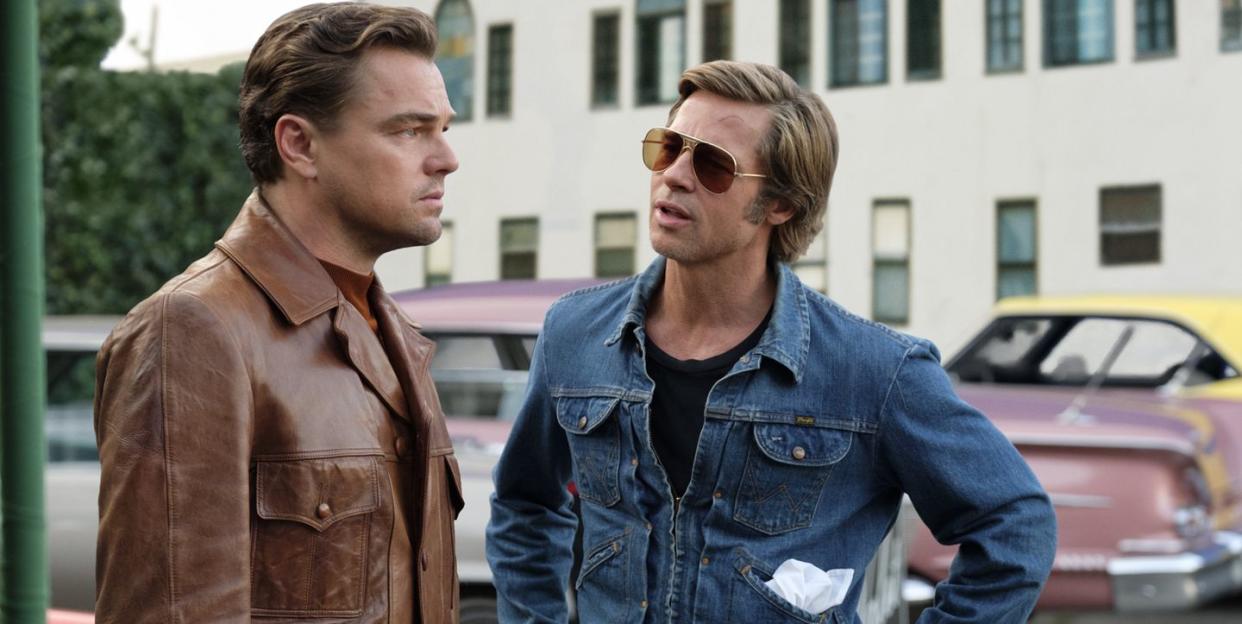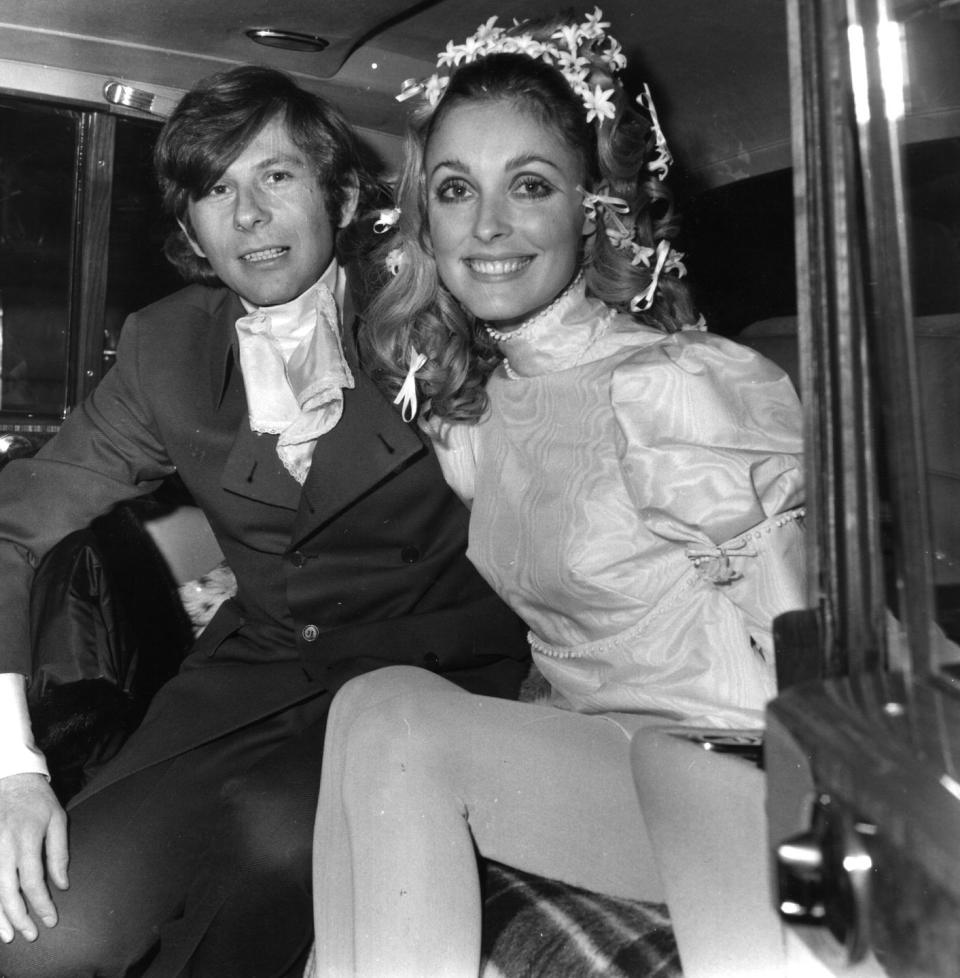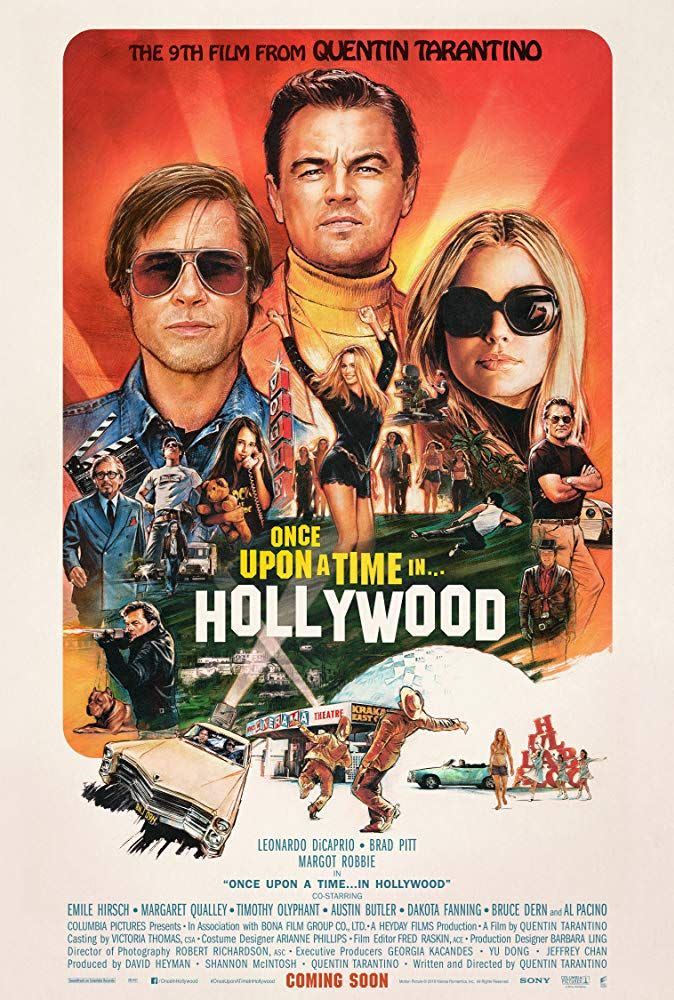What the F*ck You Just Watched: The Ending of ‘Once Upon a Time in Hollywood’

Lately, it feels like every movie has us thinking, “What the f*ck did I just watch?” In this series, we will break down exactly what happened in all those wild, mind-bendy, and just plain strange flicks...in a way that’s much easier to understand than the actual film.
THIS POST HAS SPOILERS FOR ONCE UPON A TIME IN HOLLYWOOD
Once Upon a Time in Hollywood is one of the most highly anticipated movies of the year, and if you’ve seen it already, you’re probably wondering what the hell was up with the ending. Like, why did a movie about the glamour and glitziness of Hollywood end in an all-out kung-fu-style fight scene where one girl gets literally blow-torched to death? We’re here to help explain that as best as we possibly can.
First, some background info
The film takes place during the 1960s in L.A., at the end of Hollywood’s Golden Age. To be able to understand the ending, we need to talk about what “the golden age of Hollywood” even means. Basically, think about the way you consume TV and movies today. You have about 21,388,120,938,120 streaming platforms to choose from; a whole world of movies is quite literally at your fingertips. You might not even remember the last time you went to an actual theater.
In the ’60s, the movie theater was THE PLACE to be. Most important, there was air conditioning, which was a major deal because most people didn’t have A/C in their homes. TV hadn’t gotten cinematic in the way that it is now (there was nothing anywhere close to Game of Thrones), so there wasn’t much in the way of entertainment that could compete with movies. People went to theaters in droves, and movie stars were, like, the most important people on the earth. Okay, maybe that’s an exaggeration, but still.
Why Sharon Tate was so important
Sharon Tate was the starlet of the era. She was stunningly beautiful, incredibly talented, and married to one of the buzziest directors at the time, Roman Polanski (who, I might add, was eventually accused of sexual misconduct and fled the U.S.). Sharon and Roman were, at the time, Hollywood’s golden couple during Hollywood’s Golden Age. A total double whammy.

When Sharon and her friends were tragically murdered by members of the Manson family in 1969, it catalyzed a palpable change in Hollywood. Dominick Dunne, a legendary investigative journalist, described the shift like this:
“The shock waves that went through the town were beyond anything I had ever seen before. People were convinced that the rich and famous of the community were in peril. Children were sent out of town. Guards were hired. Steve McQueen packed a gun when he went to Jay Sebring’s funeral.”
That brings us to...
The ending of Once Upon a Time in Hollywood
Quentin Tarantino subverts his audience’s assumption that Tex Watson and the three women with him (all members of Manson’s Family) are on their way to murder Sharon and her friends. Instead, they have a run-in with Rick Dalton, who scolds them for being loud in his cul-de-sac, so they change their minds and return to attack him—not Sharon. This is obviously the film’s critical twist, because in real life, Tex and co. murdered everyone in the Tate/Polanski home that night.
Cliff Booth, Brad Pitt’s character, is able to finish off the Family members in a totally ridiculous fight scene, and the infamous Tate murders are entirely thwarted. Rick, who’s been struggling with his dwindling career, joins Sharon and her friends for a drink at the very end of the film—a moment that seems to suggest he’s finally joining the inner circle of which he’s always wanted to be a part.
Besides the film’s climactic conclusion, everything else in the plot seems pretty historically accurate, so it’s not hard to think Tarantino is attempting to subject his viewers to a thought exercise, one in which the Golden Age of Hollywood wasn’t derailed by Sharon’s murder. What would movies be like today? What would Sharon have done with her career? What would’ve happened to people like Cliff and Rick? What would L.A. even look like? All we can do, of course, is speculate and imagine.
But let’s revisit Tarantino’s original premise. Clearly, he’s sentimental for the Golden Age of Hollywood. It’s not a stretch to conclude that he thinks these were the best years and things haven’t been the same since the era came to a tragic ending. You know what that kind of reminds me of? The intrinsic flaw of President Trump’s Make America Great Again message—the nostalgia for a “great” period that was really only good for white guys.

Margot Robbie has roughly 15 lines in the whole movie, and she’s the only woman to get top billing alongside Brad and Leo. The vast majority of the cast is white, and the film doesn’t acknowledge any of the racial tensions that were happening during the end of that decade.
Tarantino hasn’t talked much about the ending yet himself, so it’s hard to know *exactly* what he intended to message, but to me, his love letter to L.A. reads like a love letter that only certain people can relate to. Which, hey, isn’t that the same criticism that was levied against La La Land?
History proves that people “in the industry” l-o-v-e to make movies about themselves (hello again, La La Land). OUATIH is peak Hollywood nostalgia, as it asks viewers to play a fantastical game of make-believe, which is fine—movies are often tools of entertainment, after all. The thing that Tarantino gets wrong, though, is whether everyone sitting in the theater would even want to return to the 1960s.
You Might Also Like

